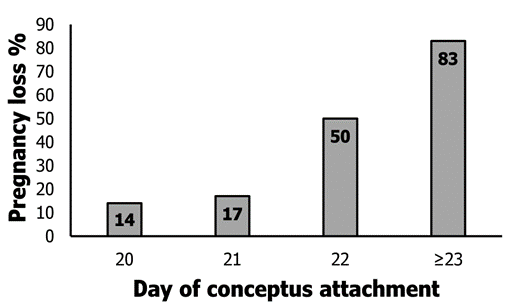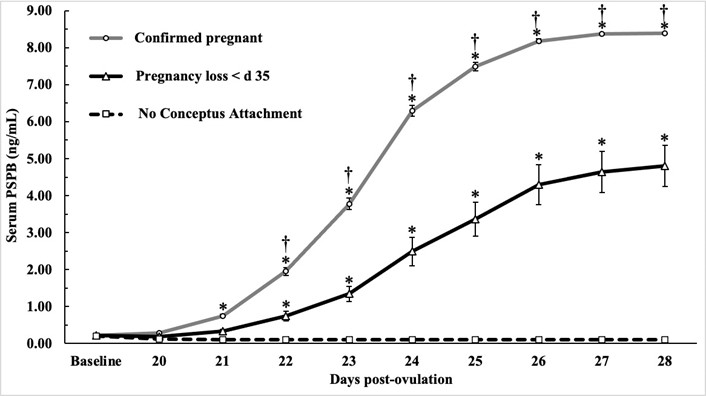Determining the causes of pregnancy loss in lactating dairy cows
New research on fertility in dairy herds.

The Pursley Lab developed a novel approach for early pregnancy detection through daily monitoring of pregnancy-associated glycoproteins (PAGs). The conceptus (embryonic and extra-embryonic structures) produces these proteins near the time it attaches to the uterus. Daily sampling allows for the determination of the day of conceptus attachment.
In most cases, conceptus attachment, signaled by the initial increase in PAGs, occurred on day 20 or 21 post-AI. Novel findings from our laboratory indicated that cows experiencing delayed conceptus attachment (≥ 22 days post-AI) have a 50% chance, or more, of pregnancy loss (Figure 1).

Our innovative model has yielded significant breakthroughs in our research and shows promising potential for improving dairy cow fertility. Recent data suggests that pregnancy rates may be as high as 80% in first-lactation cows and 65% in multiparous dairy cows at the time of conceptus attachment when using fertility programs. However, pregnancy rates at the first pregnancy diagnosis around day 35 post-AI are much lower due to a significant number of pregnancy losses occurring between conceptus attachment and the first diagnosis.
Mechanisms for these costly losses are not well understood. Our new data indicate that cows with pregnancy loss following conceptus attachment have significantly less pregnancy-associated glycoproteins in maternal circulation than cows that maintain pregnancy (Figure 2). These findings suggest a significant delay in embryonic development among these cows. Yet, it is unclear why these embryos lag during this elongation phase of development.

Understanding the underlying causes of these losses in dairy cows is essential for developing effective preventive strategies. Our research aims to identify these causes and provide insight for actionable interventions to significantly reduce these losses. By addressing these challenges, we aim to enhance fertility of dairy herds.



 Print
Print Email
Email





